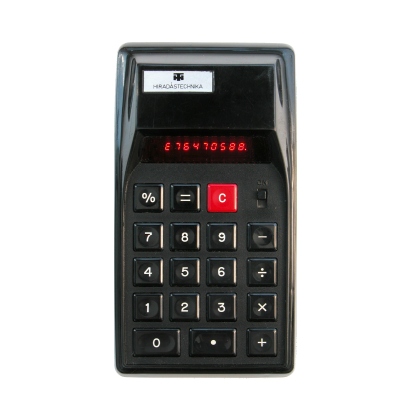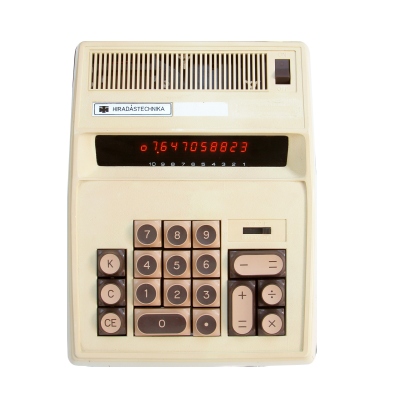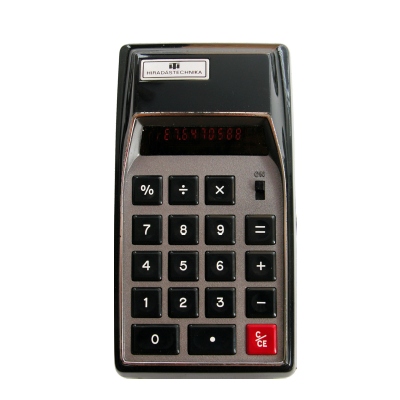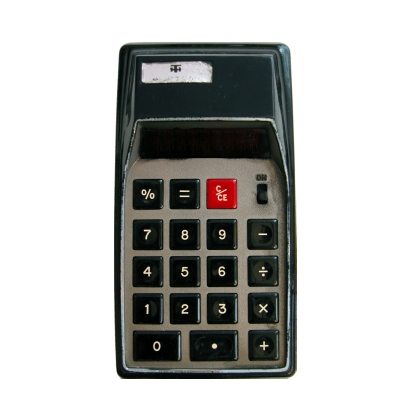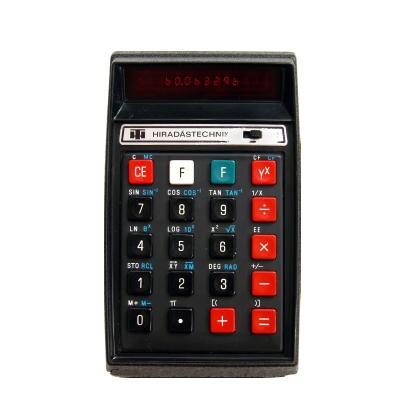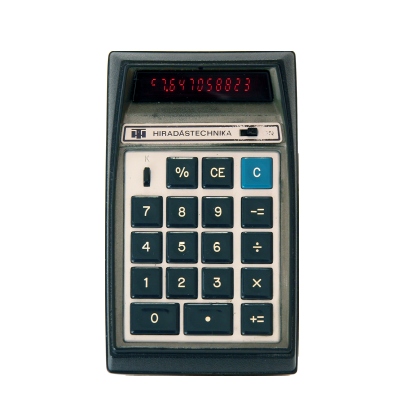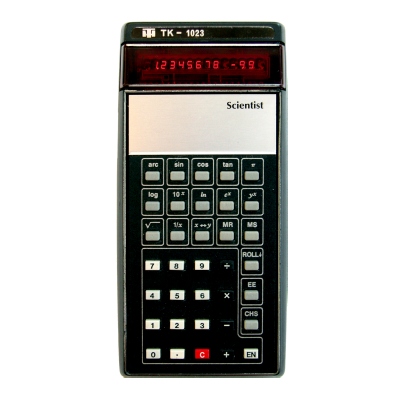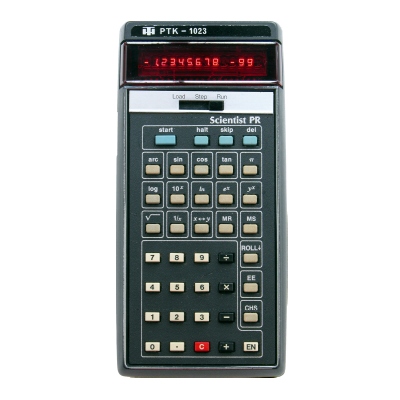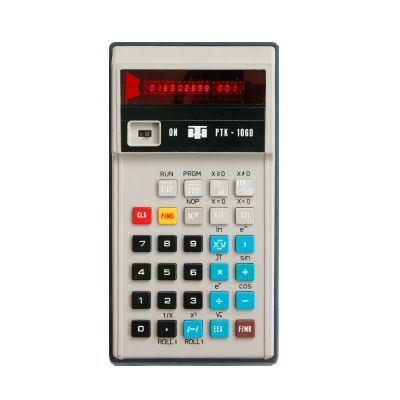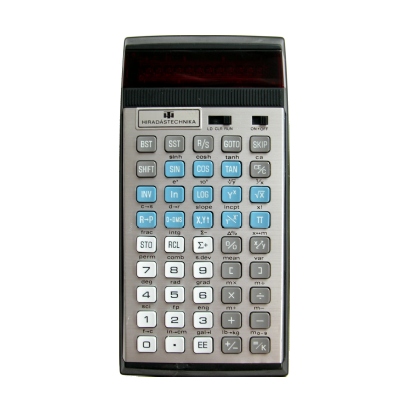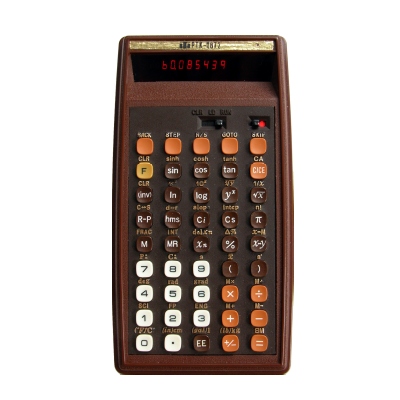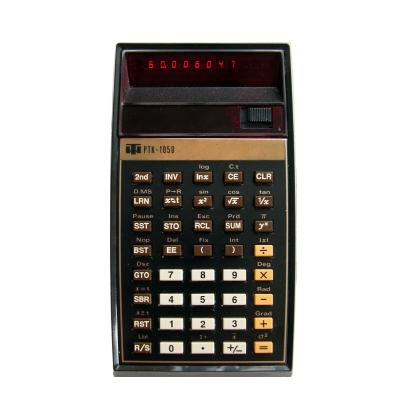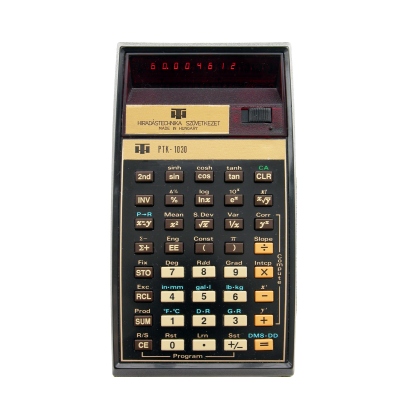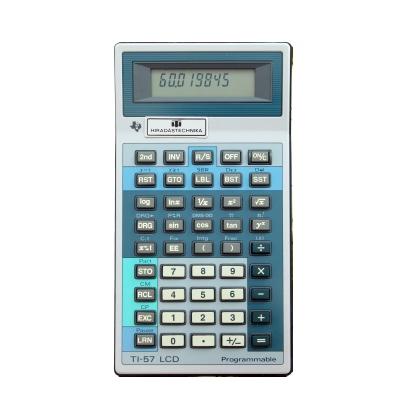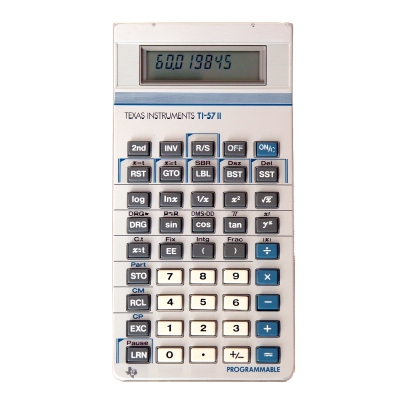Brief history of Híradástechnika calculators
Híradástechnika Szövetkezet (Telecommunication Cooperative) was established in 1951. They manufactured mainly measuring and testing equipments for televisions, and CCTV systems.
The EMG (Electronic Measuring equipments Factory) was the only hungarian corporation who produced calculators
in the early 1970s. Their models became obsolete at this time, but they planned pocket calculators from 1971. Due to burocracy and restrictions of the socialist system,
these pocket calculators had been never produced. The first types of Hunor 85/86 pocket-sized calculators announced only in 1975/76 for a very high price comparing to other similar models.
So in the early 1970s, there was a need for producing pocket calculators. Híradástechnika and Bowmar/Ali Inc. in Canada established a
cooperation company called HírBow for producing licensed calculators in Hungary, mainly from imported parts. A new plant was in construction in Balatonlelle,
which was decided to make calculators from 1974. At the Budapest International Fair '73, HírBow announced three types of pocket calculators and a desktop model.
Interestingly, Hewlett-Packard announces their first scientific model (HP-35) in the same fair. Both were big success, so
Híradástechnika started to assembly calculators from 1973.
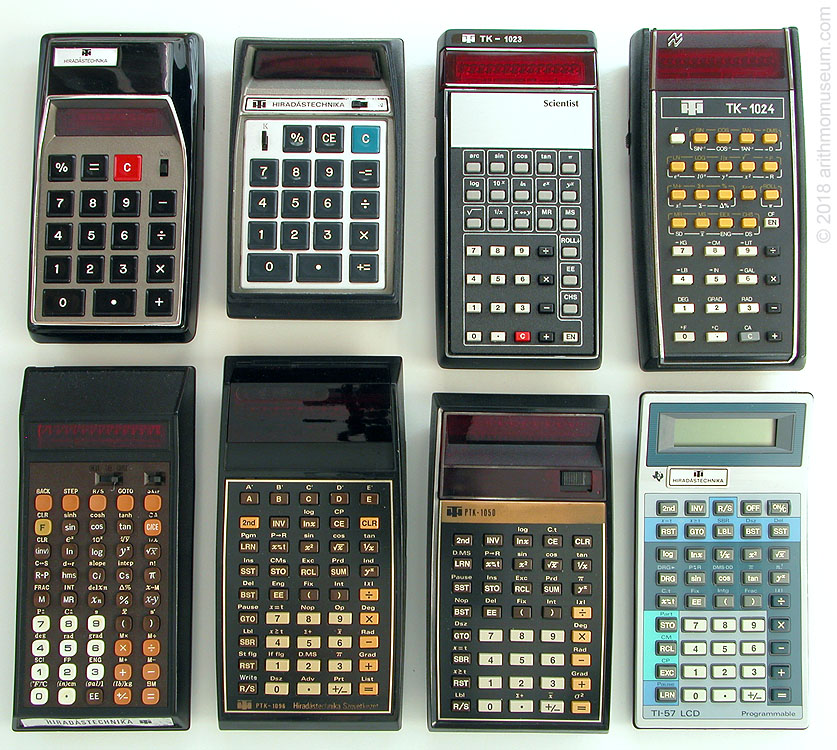
Most popular HT calculators
Top: K-832 (1974), TK-1023 (1976), TK-1024 (1977)
Bottom: PTK-1072 (1977), PTK-1050 (1980), PTK-1096 (1978)
In 1975, a new supplier was found: General Instrument Corporation, which manufactures calculator chips and in this time, complete calculators too. A new four-function basic calculator was planned and built from parts (K-841), and the EZ-3500 scientific model (TK-891) were started to assemble at Balatonlelle. Inaccuracy, insufficient capacity and lack of some widely used functions made this scientific calculator unpopular. From 1976, National Semiconductor calculators with Reverse Polish Notation logic was produced: the first two models (TK-1023, ant the programmable version, PTK-1023) was originally an entry-level scientific calculator, the last (TK-1024) became one of the most reliable calculators of the HT family.
From 1978 to 1980, Commodore's most powerful programmable model and its OEM variants with and without programming capabilities were sold under the series PTK-1072. In 1977, Texas Instruments announced a new product line including three programmable calculators, these were added to the PTK line in 1979-80: the SR-51-II (US version: TI-55) as PTK-1030, the TI-57 as PTK-1050 and the TI-59 as PTK-1096, which has an optional cradle and printer KA-100 (PC-100A). The successors of the TI-57 had not been rebranded, these were sold with original model numbers: TI-57 LCD in 1984, and TI-57-II in 1985, which was the last calculator assembled by Híradástechnika.
Note that a SHARP-licensed pocket computer (PTA-4000) with a printer and cassette interface (KA-160) were manufactured by Híradástechnika from 1983.
| Model | Year | OEM | Type | Capacity | Logic | Memory | Display | CPU |
| K-83 | 1973 | Bowmar 905 | 8 | arithmetic | - | LED | Texas TMS0103NC | |
| K-86 | 1973 | Bowmar 901B | 8 | arithmetic | - | LED | Texas TMS0103NC | |
| K-106 | 1973 | Bowmar 901D | 10 | arithmetic | - | LED | Texas TMS0107NC | |
| K-831 | 1973 | Bowmar MX-50 | 8 | arithmetic | - | LED | Rockwell 15332PC | |
| A-100 | 1973 | Bowmar TX-1000 | desktop | 10 | arithmetic | - | Panaplex | Texas TMS0107NC (?) |
| K-106 P | 1974 | Bowmar MX-80 | 10 | arithmetic | - | LED | Texas TMS0127NC | |
| TK-835 | 1974 | Bowmar MX-140 | pocket scient. | 10+2 | algebraic | 1 | LED | MOS MCS2525-001 + MCS2526-001 |
| K-832 | 1974 | Bowmar MX-55 | 8 | algebraic | - | LED | IDT LC1552B | |
| TK-891 | 1975 | General Instruments EZ3500 | pocket scient. | 8/5+2 | algebraic | 1 | LED | GI C-596-1 |
| K-841 | 1975 | - | 8 | algebraic | 1 | LED | GI C-594 | |
| TK-1023 (TK-891-1) |
1976 | NOVUS 4520 | pocket scient. | 8+2 | RPN | 1 | LED | NSC MM5758N |
| PTK-1023 | 1976 | NOVUS 4525 | pocket prog. scient. | 8+2 | RPN | 1 | LED | NSC MM5758N + MM5766N |
| TK-1024 | 1977 | National Semiconductor 4640 | pocket scient. | 10+2 | RPN | 3 | LED | NSC MM5782N + MM5751N |
| PTK-1060 | 1977 | Elektronika B3-21 | pocket prog. scient. | 8+2 | RPN | 8 | LED | K145IK501P + ..502P + ..503P |
| PTK-1072 | 1977 | Commodore PR-100 | pocket prog. scient. | 8+2 | algebraic | 10 | LED | MOS MPS7530-201 + MPS7543-001A |
| PTK-1030 | 1977 | Texas Instruments SR-51-II | pocket prog. scient. | 8/5+2 | AOS | 8 | LED | Texas TMC1503 |
| PTK-1096 | 1979 | Texas Instruments TI-59 | pocket prog. scient. | 10+2 | AOS | 100 | LED | Texas TMC0501E |
| PTK-1072-1 | 1979 | APF Mark 90 | pocket prog. scient. | 8+2 | algebraic | 10 | LED | MOS MPS7530-201 + MPS7543-001A |
| TK-1072-1 | 1977 | APF Mark 56 | pocket scient. | 8+2 | algebraic | 10 | LED | MOS MPS7530-201 |
| PTK-1050 | 1980 | Texas Instruments TI-57 | pocket prog. scient. | 8/5+2 | AOS | 8 | LED | Texas TMC1501NL |
| TI-57 LCD | 1984 | Texas Instruments TI-57 LCD | pocket prog. scient. | 8/5+2 | AOS | 8 | LCD | Texas TP0456NL + CD4555BNL |
| TI-57-II | 1985 | Texas Instruments TI-57-II | pocket prog. scient. | 8/5+2 | AOS | 8 | LCD | Texas CD4572BN2 + CD4555BN2 |
Thanks to Attila Piros for informations about the TI-57-II.
